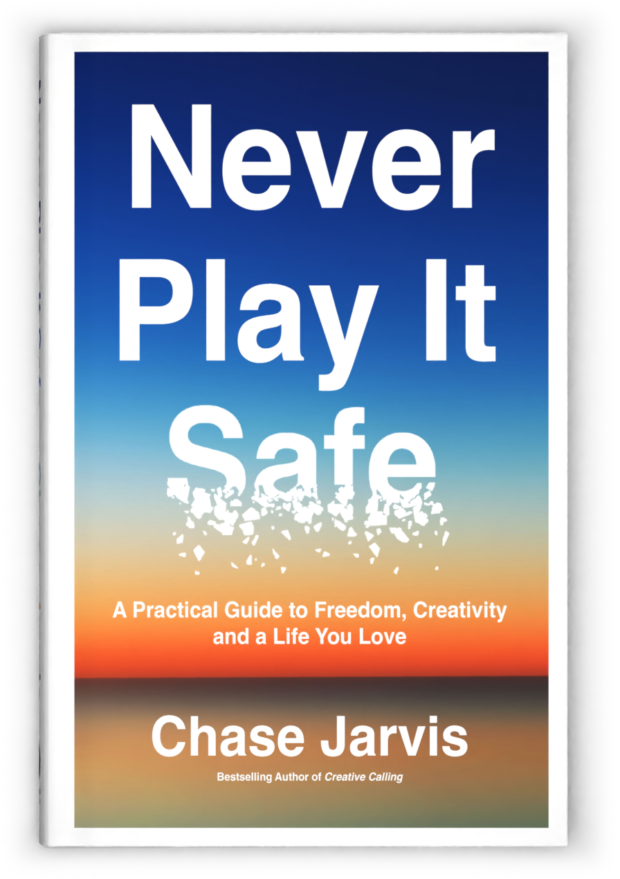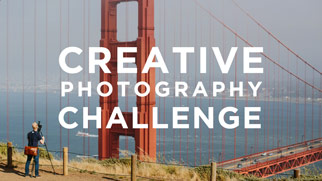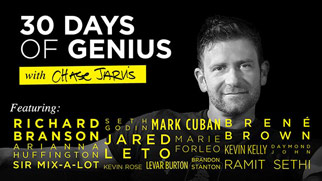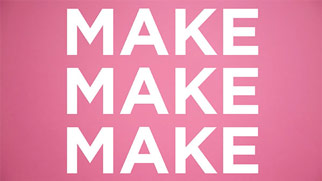Austin Kleon is a writer who draws. He’s the best selling author of three illustrated books; Newspaper Blackout, Steal Like An Artist, and Show Your Work. Using his own words and borrowed (stolen) words alike, Austin articulates better than anyone how to find your own style and vision and then what to do with your work. He’s been featured on NPR, Wall Street Journal, The New York Times and this is quickly becoming a regular here on cjLIVE.
This interview is from a few years ago, but I’ve been itching to share it again because it still packs such a heavy punch. Austin, the quote factory, Kleon seems to have a quote that perfectly encapsulates every topic we touch on. We go from tip to toe on the creative process; how to draw inspiration for your work, how to hone your style while growing an audience, and how to ship your work.
In today’s episode:
- Boring life = best art. Schedules, habits, daily routines make you more productive and more creative.
- If you aren’t sharing your work, you’re missing out on half of the artistic experience. The person who experiences your art is just as important as you are in the process. Sharing your work is also a tool to attract more people who are interested in what you’re interested in.
- Side projects and hobbies are critical components in defining what your next best work will be.
Enjoy!
You don’t want to steal the style, you want to steal the thinking behind the style.
FOLLOW AUSTIN:
instagram | twitter | website
Listen to the Podcast
Watch the Episode
Subscribe




Some Questions I Ask:
- Tell me about you and your process. [4:20]
- If you’re living a boring life, how do you extract creativity from it? [5:45]
- How do you reconcile achieving your big vision with doing these small daily actions? [9:00]
- Talk to me about how Newspaper Blackout started as a small side project and turned into a book. [10:10]
- Tell us about your next book, Show Your Work. [16:20]
- Audience question How did you publish your first book? [24:15]
- How did kottke.org get your material and how did the publisher seek you out? [26:16]
- Audience question How do you give credit as you’re stealing like an artist and can I make money off it? [30:18]
- How do you make the work your own? [33:30]
- Audience question How do you decide which parts of your creative process you share and which you keep private? [38:35]
- Audience question Where do personal projects come into play if you’re just starting out? [40:16]
- Audience question What would you change about Steal Like An Artist? [45:22]
- Audience question How do you decide when your piece of work is complete? [49:24]
- Talk to me about something you posed to me last night; “what verbs are you living right now”? [51:15]
- What do you mean by “geography is no longer our master”? [56:20]
- Do you allow yourself the freedom to go down rabbit holes while researching? [59:03]
- Do you have a specific daily routine? [1:00:45]
- How do you balance the distraction of responding to people excited by your work with actually doing work that is exciting them in the first place? [1:03:50]
- What do you mean by “get yourself a calendar”? [1:06:55]
- Audience question How do you target what you’re sharing to the people who will pay you for your work? [1:08:54]
- Let’s talk about your next book, Show Your Work. [1:12:35]
- Audience question How do you prioritize your family in the beginning stages? [1:15:30]
In This Episode, You Will Learn:
- Why Austin purposefully leads a boring life. [5:00]
- It’s about having the time, space and materials and creating a repeatable process. [7:06]
- “If I only did work when I was inspired, I wouldn’t have much work.” ”Inspiration is for amateurs. The rest of us sit down and get to work.” – Chuck Close [8:04]
- Don’t discount the value of the small projects- you don’t know what the big stuff is going to be. I turned my side project into work that I’m most proud of. [10:15]
- Because we all walk around with phones in our pockets, there’s no barrier between making art and sharing it. You don’t have an excuse for not getting your work out there [14:20]
- Something you need to understand about art is that you as the creator is only half of the equation. The person who’s going to experience this work is just as important [15:30]
- Austin’s book, Show Your Work, is about sharing the process of your work. Art is no longer all about the product. [16:25]
- How Austin got his blog kicked off by sharing what he was learning. [18:00]
- Publicly sharing your process is a part of the future of creativity. [20:45]
- The old way of thinking about what genius is, what Brian Eno calls “scenius”, and how to use your tribe to better your art. Check out the book by Steven Johnson “Where Good Ideas Come From” [21:34]
- Why you need to first focus on getting one editor, art director, or professional influencer to notice and share your work. Because once you have one, you can leverage that into more. [27:40]
- How Austin gauges whether or not art is plagiarism or a respectful nod. [31:30]
- How to take the family tree approach to artistic research. [35:00]
- You don’t want to steal the style, you want to steal the thinking behind the style. [36:00]
- If you share things things that are genuinely interesting to you, you will attract your own kind. [39:00]
- Your next thing is your current side project. [41:03]
- Why employers should encourage their employees to pursue side projects. [41:05]
- How I try to be different, not just better. [42:30]
- It’s your job to do the work that you want to see get done. [43:30]
- How to use the shame of imperfections from your last work to fuel your next work. [46:00]
- Mary Karr doesn’t read her old books because “it’s like a dog sniffing old turds.” [48:23]
- Why deadlines and constraints are important for your individual art pieces as well as your overarching career. [49:30]
- A lot of people want to be the noun without doing the verb. If you want to be a writer, you’ve got to write! [51:25]
- Practicing your craft is like training an animal. [54:35]
- Look outside of your industry for inspiration. [56:30]
- Austin’s super boring, super productive daily routine. [1:01:00]
- How I think about schedules and how having one makes me more productive. [1:02:00]
- “Be as generous as you can and selfish enough to get your work done.” [1:04:10]
- The artist who changed Austin’s life. [1:04:40]
- How Jerry Seinfeld uses a calendar and makes sure he digs his proverbial ditch every single day. [1:07:19]
- How to use popularity and influence to land jobs. [1:10:30]
- People ripping you off is not your biggest concern, obscurity is. [1:12:50]
- How Austin’s agent started out as a fan. [1:13:00]
- Don’t forget to work on yourself as you work on your craft. Nobody wants to hire a jerk. [1:17:00]
- Marry well. Partner well. Surround yourself with the best people you can. [1:18:50]
- Your work is not going to be what gives you comfort on your deathbed, the people in your life are” [1:21:05]
This podcast is brought to you by CreativeLive. CreativeLive is the world’s largest hub for online creative education in photo/video, art/design, music/audio, craft/maker, money/life and the ability to make a living in any of those disciplines. They are high quality, highly curated classes taught by the world’s top experts — Pulitzer, Oscar, Grammy Award winners, New York Times best selling authors and the best entrepreneurs of our times.

























